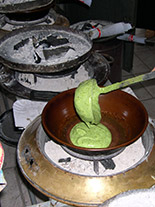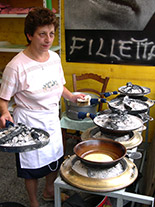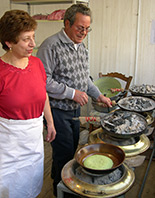| ||||||||||||||||
You are in: Home–› The traditions–› Tipical sweets | ||||||||||||||||
THE ANNUNCIATED FEAST - THE SEPULCHERS - THE HOLY FRIDAY - TYPICAL DISHES - TYPICAL SWEETS | ||||||||||||||||
| ||||||||||||||||
| ||||||||||||||||
These last three sweets derive from particular processing of the prickly pear, a cactus that in the Bronte area grows, without any particular care, luxuriant, almost invasive, and gives abundant and tasty fruits of various types and colors. From these (yellow and/or red variety), by boiling, a delicate mustard is obtained. Traditionally it is prepared in the countryside, boiling the prickly pears in a large container (‘u lavizzu or 'u menzarangiu), placed on a high flame. After about an hour of boiling, the fruits are placed in hemp sacks or cloth (cannavazzu) and filtered. The mustard, the cooked wine and the mastazzori derive from particular processing of the prickly pear, a cactus that grows in the Bronte area, without any particular care, luxuriant, almost infesting, and gives abundant and tasty fruits of various types and colours. From these (yellow and/or red varieties), a delicate mustard is obtained by boiling. Traditionally it is prepared in the countryside by boiling prickly pears in a large container ('u Lavizzu or 'u Menzarangiu), placed over a high heat. After about an hour of boiling, the fruits are placed in hemp bags or cloth (Cannavazzu) and filtered. After taking a small quantity, setting it aside to obtain the lacciata by mixing it with the flour, the liquid obtained is boiled again, over a low heat, for at least another two-three hours, after which the lacciata is slowly added, stirring continuously to avoid lumps. After another two hours, when the mustard acquires the consistency of a cream and a brown colour, it is ready to be consumed: poured onto plates and garnished on the surface with chopped baked almonds and chopped pistachios, it can be enjoyed while still hot or slightly cold. Placed inside characteristic clay tiles hollowed out with decorations that make the cake take on the most varied shapes (heart, flower, dove, fish, basket), it is subsequently dried with prolonged periods of exposure to sunlight and takes on a greater consistency and the characteristic inflorescence sugary. By further prolonging the boiling process of prickly pear juice, cooked wine is obtained, an indispensable component for the preparation of various types of traditional desserts and very rich in calories: it was used to prepare a particular granita, obtained by mixing it with snow, to flavor the snack of children by spreading it on toasted bread but, above all, for the preparation of some very particular desserts, today, unfortunately almost "unavailable", panitti and mastazzora (typical Christmas desserts). The first, 'panitti', have the shape of a small donut with dough prepared with sugar, flour and suet ('a Saimmi), with an elongated or rolled shape. They are prepared with a filling of almonds, pistachios, chopped hazelnuts and walnuts, dried figs, raisins, cooked wine and grated orange peel. Mastazzora are instead obtained by mixing the flour directly with cooked wine. The dough, cut into 10-15 cm strips, is then cooked in the oven. A variant of this very particular dessert is called a luffia: the mastazzora, once baked, are dipped in cooked wine, which acts as a glue for a tasty addition of chopped pistachios, almonds and hazelnuts. | ||||||||||||||||
| | ||||||||||||||||||||||
| ||||||||||||||||||||||
It is made by the pastry chefs of Bronte in the shape of a white lamb lying down, decorated with flags and flowers, among variously colored martorana fruit. The dessert, composed of a soft "royal pastry", is made with soft almond paste, a delicious Arab invention, worthy, for its sweetness and refinement, of the most noble palates. It once represented the traditional Easter gift that every lover ('u zzitu) gave to his girlfriend: the bigger the lamb, the more martorana fruit surrounding it, the more it weighed and the sweeter the demonstration of affection was meant to be (and, of course... . the wallet is more stocked!). | ||||||||||||||||||||||
| ||||||||||||||||||||||
| ||||||||||||||||||||||



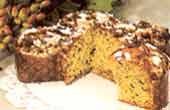

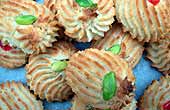
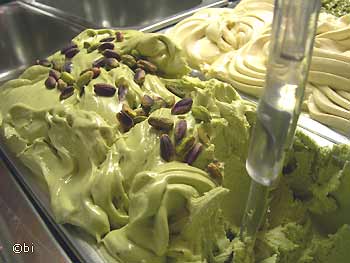
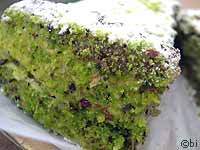


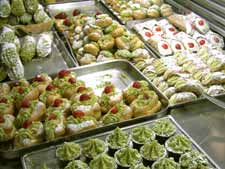
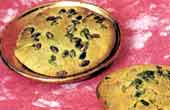
 We stop to talk a bit about prickly pear mustard, cooked wine and "mastazzori", which are now almost impossible to find and whose unique and ancient flavour is unknown to the new generations.
We stop to talk a bit about prickly pear mustard, cooked wine and "mastazzori", which are now almost impossible to find and whose unique and ancient flavour is unknown to the new generations. The "mammurati", or rather the "cori" (hearts) or, as they are more commonly called, the "coszaruci" (sweet things), are composed of a mixture of almonds and/or pistachios, egg white and sugar , heart-shaped, covered with a white icing dotted with "javuricchi" and baked.
The "mammurati", or rather the "cori" (hearts) or, as they are more commonly called, the "coszaruci" (sweet things), are composed of a mixture of almonds and/or pistachios, egg white and sugar , heart-shaped, covered with a white icing dotted with "javuricchi" and baked. The mostarda, a traditional Christmas cake obtained (like "cooked wine" or "mastazzori") from the tasty prickly pear of Bronte's skiing, which recently had the "dop" recognition of the European Union.
The mostarda, a traditional Christmas cake obtained (like "cooked wine" or "mastazzori") from the tasty prickly pear of Bronte's skiing, which recently had the "dop" recognition of the European Union. The "cullura" more than a sweet, constituted the principal food for the Easter Monday picnic. Pregnant and bulging represents the feast of life that comes back after the mourning. Consists in a mixture of flour, lard and sometime sugar.
The "cullura" more than a sweet, constituted the principal food for the Easter Monday picnic. Pregnant and bulging represents the feast of life that comes back after the mourning. Consists in a mixture of flour, lard and sometime sugar. In the paste are incorporated two or three raw eggs with shell, other strips of pastry are placed on top to cover the eggs and the all thing sprinkled with "iavuricchi" (small multicolored confetti).
In the paste are incorporated two or three raw eggs with shell, other strips of pastry are placed on top to cover the eggs and the all thing sprinkled with "iavuricchi" (small multicolored confetti).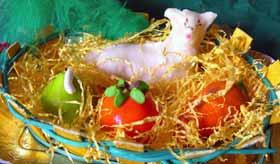 The Easter lamb is a sweet product with sizes and weights that vary only during the Easter holidays.
The Easter lamb is a sweet product with sizes and weights that vary only during the Easter holidays.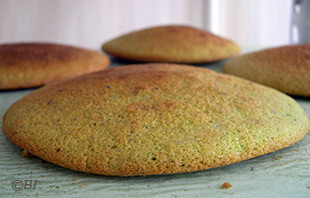
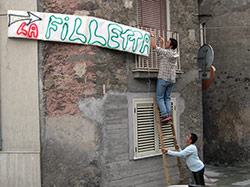 Cooking requires a lot of skill and no distractions as each Filletta is cooked individually in a small copper pan greased with butter, placed at a distance of about 10 cm. on a brazier filled with hot ash and covered by a lid on which other burning embers are placed (focu sutta and focu supra, but with little heat below and much above).
Cooking requires a lot of skill and no distractions as each Filletta is cooked individually in a small copper pan greased with butter, placed at a distance of about 10 cm. on a brazier filled with hot ash and covered by a lid on which other burning embers are placed (focu sutta and focu supra, but with little heat below and much above).
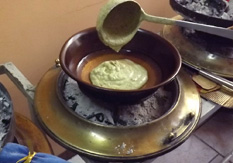


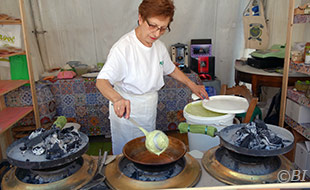 One of the few "fillittare" is Mrs. Rosa Spitaleri (pictured on the right and below) who, together with her husband, has been preparing exquisite fillettes in her artisan shop on Via S. Pietro for almost 40 years.
One of the few "fillittare" is Mrs. Rosa Spitaleri (pictured on the right and below) who, together with her husband, has been preparing exquisite fillettes in her artisan shop on Via S. Pietro for almost 40 years.